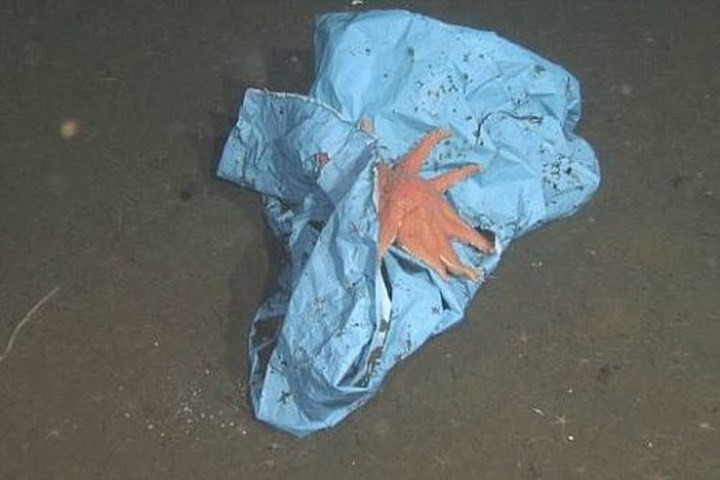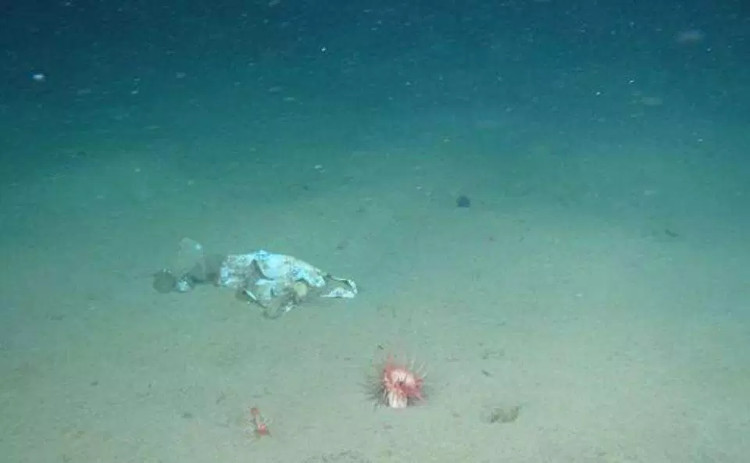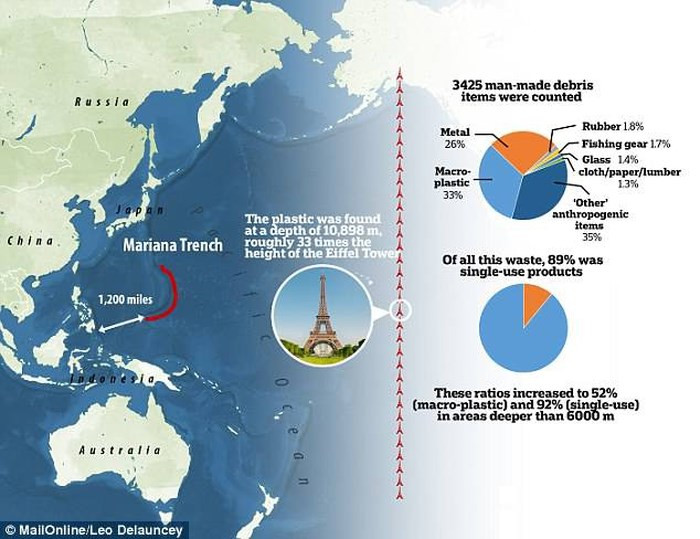Detecting scrap yard in the deepest place in the world
11,000m below sea level, the famous bottom is no longer the mysterious world of deep sea creatures. It has become . the world's deepest landfill.
A diver used a special camera to record a naughty starfish with a large plastic bag at a depth of 10.898m. This is not the only thing that exists in this mysterious world. More than 3,000 other "bottle ticks" were discovered by the expedition team at the bottom of the Mariana basin - the deepest place in the world, in the Pacific Ocean.

A rare species of starfish lives in the deepest place in the world playing with plastic bags - (photo: JAMSTEC).
Scientists from the Japan Marine and Earth Science and Technology Agency (JAMSTEC) used the "deep-sea debris database" in combination with the actual data they collected for the project. pollution of the marine environment with human waste.
In particular, plastic bags that starfish are mischievous have 30 years of age because plastic or plastic are the most difficult to decompose.

Plastic bags that resemble a bizarre undersea object are a sad symbol of environmental pollution - (photo: JAMSTEC).
The study surveyed the deep sea area, 1,000km from the mainland. The footage shows many huge man-made landfills among the most desolate and mysterious lands.
The data was collected several decades ago - for example, the plastic bag image was only published after 20 years. Sadly, more and more scientists are finding it difficult to find "scooped" pieces all over the ocean.

The Mariana gap - the depth of the height of 33 Eiffel towers (marked in red).
In total, there are data of 5010 dive times and 3,425 well-studied human objects. More than 33% of them are plastic, 26% are metal, 1.8% are rubber, 1.7% are fishing tools, 1.4% are glass, 1.3% are fabric - paper - wood and 35% are unclassified.
89% of plastic waste is disposable products. Considering the ocean area 6,000 meters or more, more than half of the garbage is plastic and most are disposable items.
Japan - a country that pays great attention to environmental issues - has called on people to turn away from disposable plastic products - a big reason why mountains of non-biodegradable waste are piling up all day gender.
- Discover groove secrets Mariana
- Detecting the deepest cave in the world, not finding the bottom
- The farmer invented the scrap cans
- The strange transformation of scrap at the dexterous hand of man
- Inside the explorer ship, the deepest part of the Earth
- The deepest part of the earth is exposed
- Detecting insects that live the deepest in the ground
- Observe the deepest place in the ocean
- 3-hour diary under the deepest Mariana region of film director Titanic
- How does the 'hell well' deepest on the ground appear?
- Guinness records the world's deepest diver
- What's in the deepest place on Earth?
 Is the magnetic North Pole shift dangerous to humanity?
Is the magnetic North Pole shift dangerous to humanity? Washington legalizes the recycling of human bodies into fertilizer
Washington legalizes the recycling of human bodies into fertilizer Lightning stone - the mysterious guest
Lightning stone - the mysterious guest Stunned by the mysterious sunset, strange appearance
Stunned by the mysterious sunset, strange appearance